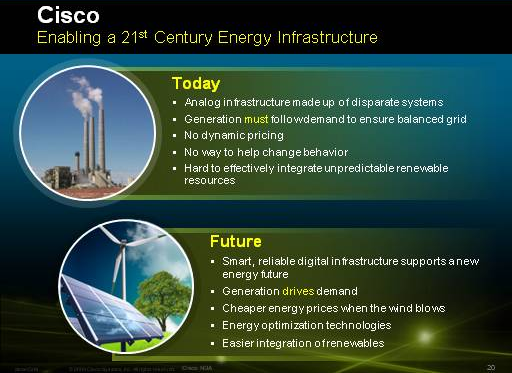Cisco boosts Connected Grid with energy management tools for homes, businesses

Cisco is announcing a major leap into the home energy management space today, introducing tools that are designed to allow utilities and their customers to make smarter, more efficient, money-saving decisions about their use of energy. In addition, Cisco is also introducing a multi-building "Mediator Manager," a server-based method of managing energy policies across thousands of buildings.
Just over a month ago, Cisco rolled out its Connected Grid portfolio, a move that banked on its visions of smart-gird technology running like one big network - a Cisco specialty.
The technologies being announced today at the Cisco Live conference in Las Vegas build on the Connected Grid approach and are centered around an easy-to-use interface on a Home Energy Controller. The company, whose customers would be the utility companies, said the timing is right as utility companies are looking for ways to bring about change, based on regulatory, environmental and financial pressures. Utilities are also being driven by the demand from customers, who are looking for ways to reduce energy costs and monitor usage on their own.
The company's Mediator Manager was designed with businesses in mind. The technology will allow businesses to connect, monitor, aggregate and manage distributed networks of Cisco Network Building Mediators. Essentially that allow the company to use a central enterprise portal to look at building systems and reduce overall energy consumption and system downtime.
It's a crowded field, with many companies offering smart building management tools. Cisco, however, says that its offerings are the first to extend the network as the platform for Smart Connected Buildings while others are difficult to extend, integrate, deploy and manage with the IT network and apps.